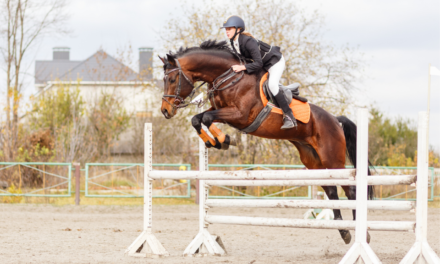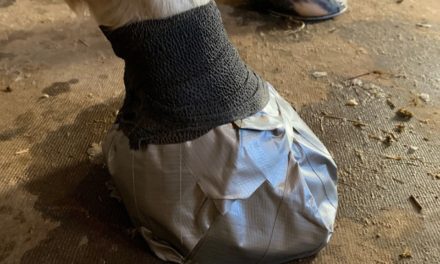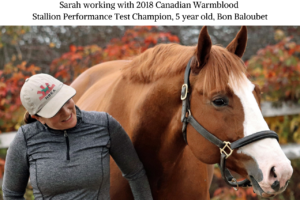We may earn money or products from the companies mentioned in this post. For more information please check out our disclosure page
10 Must Do Things to Start Your Adventure Together
An off the track Thoroughbred (OTTB) is usually an economical way to purchase a horse, however, it is likely your new OTTB will look ribby, have a skinny neck and no topline, seem really narrow when you look at them from the front, and they look nothing like the lovely filled out OTTB belonging to your friend!

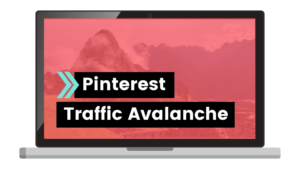

Over the past 20 years, I have purchased and retrained more OTTB’s than I can remember and over time I developed a holistic program I apply from the start of their time with me. The first three months with your new horse are a crucial start in their development and your relationship together.
Your new OTTB arrives at their new home with you – now what?
1. Ulcers. Ulcers tend to be quite common in OTTB’s. Keep an eye out for irritable behaviour when grooming around their belly area, kicking and pinning ears. A horse with ulcers will not maintain weight because they do not process and distribute feed properly.
Ask the person you purchase the horse from if they have had any signs of ulcers, if not and you still suspect they are present contact a vet and get a scope done. See my blog on “How to Prevent and Treat Ulcers”
2. Hooves. Thoroughbreds are not known for their good feet! In addition to this if your OTTB came straight off the track the shape of their hoof will need to be corrected. Racehorses tend to be shod long in the toe and have a low heal.
This is done on purpose to assist in supporting themselves at high speeds. Consult and work with a good farrier as to shortening the toe and allowing the heal to grow out in order to correct the angles so your horse doesn’t put excessive pressure on its tendons. Find more information in my blog “ Hoof Issues and Correcting the OTTB Foot”
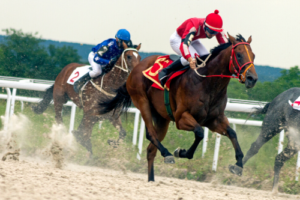
.
3. Do A Fecal Test. This is quick and easy to do. Take a sample of your horses’ faeces and get it to the vet right away, this will give you peace of mind knowing if your has parasites or not and your vet will advise you what to do if parasites are found.
As with ulcers, a horse with parasites will have problems maintaining weight and condition as the parasites absorb the nutrients the horse is ingesting.
One of my first OTTB’s suffered a serious colic episode a year after I bought her despite me regularly deworming her. It turned out she had compaction colic caused by a large build up of parasites. She spent a week at the vet and then had further treatment at home to break down the build up. I couldn’t understand how this had happened as I had followed a regular program. My vet informed me she had probably not been dewormed while at the track and over time it had built up excessively.
4. Check Teeth and Float if Necessary. I always ask the previous owner when this was last done. I have found that track horses teeth are usually in decent condition and have been regularly floated when they come to me however,
I always have the vet check to make sure. Making sure your horses’ teeth are floated regularly is another way to make sure they are able to chew and properly utilize their feed sources.
Un-floated teeth will eventually cause issues with soreness, possible cheek ulcers, and grazing inside the horses’ cheek as the teeth develop sharp points. They will start to drop a lot of their grain, be unable to properly chew hay, and will start to lose weight.
Tink (registered name Uswain Bolt) one of the horses I will be including in this blog, arrived with his teeth in pretty good condition. Six months later he started to show severe behavioural issues under saddle, he didn’t want to go forward at all and started to rear, something he had never done before.
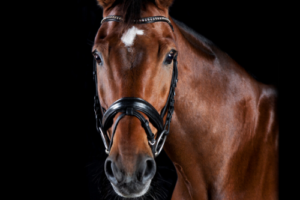
.
The change of behaviour was significant and checking his teeth was the first thing I went to in order to diagnose what may be troubling him. He had developed quite sharp points that caused him pain and explained his reactions.
As the vet was not due for another two weeks I continued his training in a hackamore – another option would have been to cease training altogether until the problem was fixed. I put minimal time on him and, as he was a horse I could trust not to bolt or take off, I used this time to allow him to relax again, used little to no rein contact and just let him be a horse under saddle deciding his own direction and pace.
Some horses will have a low pain tolerance and tell you they feel pain through this behaviour change, however, this is not always the case. Pippy (registered name Bon Espirit) is my 4-year-old warmblood filly who showed no issues at all.
At her annual vet check, we discovered she had a fracture in a back tooth. The fractured tooth was still attached to the main tooth but was also at a severe angle which had caused it to embed itself into her cheek. Despite the fact she would have been in pain she had shown no signs and had no weight loss issues
5. Feed Good Quality Hay. Dusty, old, mouldy, or nutrient deficient hay will affect your horses’ health causing possible risks with issues such as colic and breathing issues. We had an OTTB mare arrive with the worst looking coat. It was dull and she had seriously flakey skin. I believe that the lack of grooming combined with poor quality hay had caused her coat to lose all condition.
Once we had her on a good feed program with good quality hay and performed items 1-4 and regular grooming, she developed a totally different coat. It is never just one thing which is why I always recommend the holistic approach and check everything that might affect your new OTTB’s overall health in order to optimise their ability to start their second career.
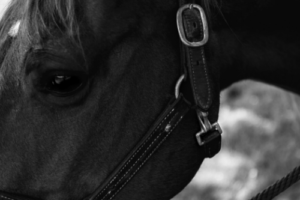
.
6. Feed a Good Quality Grain. I can’t emphasize this enough. Do your research and don’t go down the cheap route, avoid starchy grains, and lastly make sure your horse is getting all its necessary minerals and vitamins. Often OTTB’s are not easy keepers, they need balanced calories. When we moved from Alberta to New Brunswick there was no supplier of the grain I always used.
Our feed room eventually looked like a kitchen where we attempted to balanced grains, beet pulp, rice bran, black sunflower seeds, minerals, liquid oils, and supplements, all at varying degrees for each horse, in the attempt to keep horses’ weight on and provide them everything they needed. It was a losing battle.
Eventually, I talked Hoffman’s Feeds, the Canadian company I had used for 16 years, to allow me to become a distributor of their grain in New Brunswick so I could feed my horses and my boarders’ horses, what they needed. I have never looked back, every other ingredient in my feed room went (other than supplements) and the quantities of feed reduced dramatically because they feed they were getting was very digestible and much better quality. Everything became simplified and our horses maintained their weight or gained it with small changes. I will hopefully be adding a blog dedicated to this topic.
7. Allow your new OTTB to have some down time. It is likely your new horse has gone through some rigorous training from a young age, because of this I allow my OTTB’s to have 2-3 months downtime. Turn them out in a field with other horses and allow them to be a ‘horse’ (make sure you introduce them to a new herd gradually). This way they will come back into their new career with a fresh mind.
8. Use This Down Time to Develop Groundwork and Create a Great Relationship Between You. Just because your horse is turned out for 3 months doesn’t mean there is nothing you can do together. Value this time! This is where you and your horse can work together on groundwork and start to bond. Check out my blog on “Groundwork and Bonding with Your Horse – How to Speak the Same Language”.
9. Start Speaking the Same Language. When you spend time doing groundwork exercises together you will start to speak the same language. This will be one of the most important things that develop between you and your new OTTB! The exercises you will do on the ground will translate to what you are going to ask of them under saddle. You will know what you are asking and the response you want and your new horse will learn to understand the questions you are asking and will eventually respond as soon as you ask.
10. Be Patient. Sure we all want to jump on our new horse and get right to it. My advice is not to fall into this trap, take your time and do it right. Think through every interaction, understand what your plan is, what you expect from each day, and be prepared for days that go wrong. Don’t let them get you down. Finish on a good note and come back to it another day.
This post may contain affiliate links. Please read our disclosure for more info.
admin
Latest posts by admin (see all)
- A Horse For All Reasons – Guest Blog by Lucy from Horse Factbook - April 8, 2020
- How To Deal With A Spooky Horse Trail Riding - March 31, 2020
- Our Top 20 Amazon Equestrian Products - January 30, 2020



